Wordle has become one of those Internet Sensations. It’s a simple word-guessing game where you enter words to try to match the letters in the sequence of the daily word. It’s simple, challenging, and fun.
The game was designed by Welsh software engineer Josh Wardle as a love letter to his partner. It’s popularity has skyrocketed; from just 90 people a day in November of 2021 to over 2 million people a day at the end of January 2022,
When I first started seeing friends posting their redacted Wordle games for the day I was curious. After a few weeks, I decided to see what it was all about.
“Hey, this looks like a cross between Jotto and Word Mastermind!” I said.
Not familiar with those games? Fear not, I’ve got you covered.
Jotto
Let’s start with the older of the two games.
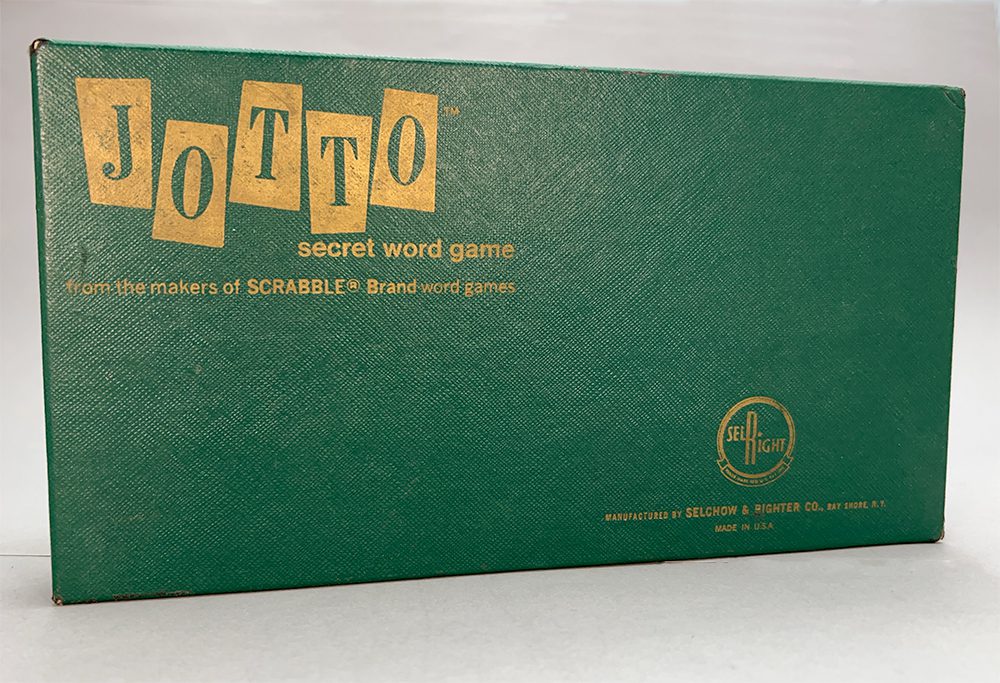
Jotto was invented in 1955 by Morton Rosenfeld, who marketed the game under his own Jotto Corporation. In the 1970s, the copyright was picked up by Selchow and Righter (the original Scrabble company). Being something of a collector of Selchow and Righter games, when I saw Jotto in a local thrift store, I grabbed it right away.

What comes in the Jotto box is minimal: two pads of paper and a pair of small pencils.

What you’re really paying for is the idea.
Each player takes a Jotto pad. At the top of the left column, they each write in their five-letter Secret Word. The remainder of the left column is devoted to their opponent’s guesses. Each guess gets written down and the number of correct letters in any position (known in the game as Jots) gets written down beside the word.
The column to the right is for the player’s guesses at their opponent’s secret word. As with Wordle, the guesses are written in descending order.
At the bottom of the Jotto pad is a helpful list of the letters in the alphabet for you to cross out when you’ve eliminated a letter from consideration. (I also circle letters I’m certain of.)
Starting at 100 points, each guess costs a player five points. Therefore, the faster a player guesses their opponent’s word, the more points they score. The rules suggest playing to 150 points but, as with Wordle, we usually find that one game is sufficient for the day.
Before we get to Word Mastermind, let me remind you of the original game: Mastermind.
Mastermind
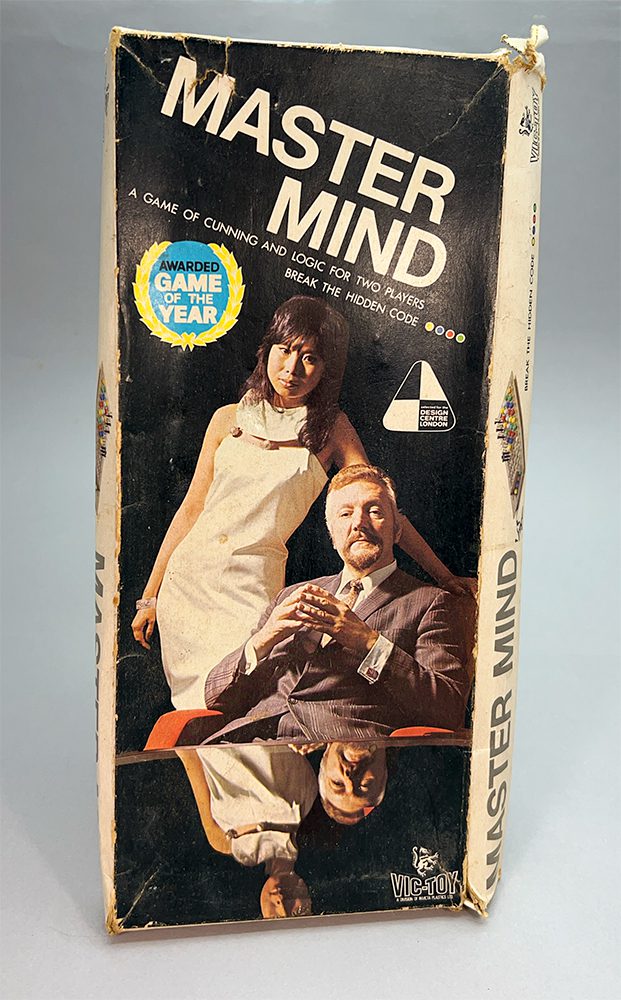
First appearing in 1971, Mastermind is a simple hidden code game. We’ve touched on it in one of our Board Game Step Ladders, but just in case you don’t remember how it plays: one player secretly takes four colored pegs and places them at their end of the board. Those pegs remain hidden behind a plastic screen for the entirety of the game.
The code-breaker player then takes turns placing colored pegs in rows on their end of the board. Each row has four spaces for pegs and there are six colors to choose from.
After each guess the code-breaker makes, the coder gives the code-breaker feedback on their guess. Similar to Wordle, a correct color in the wrong position gets one response (a white peg in the spaces to the left of the row) and a correct color in the correct position gets another (a black peg).
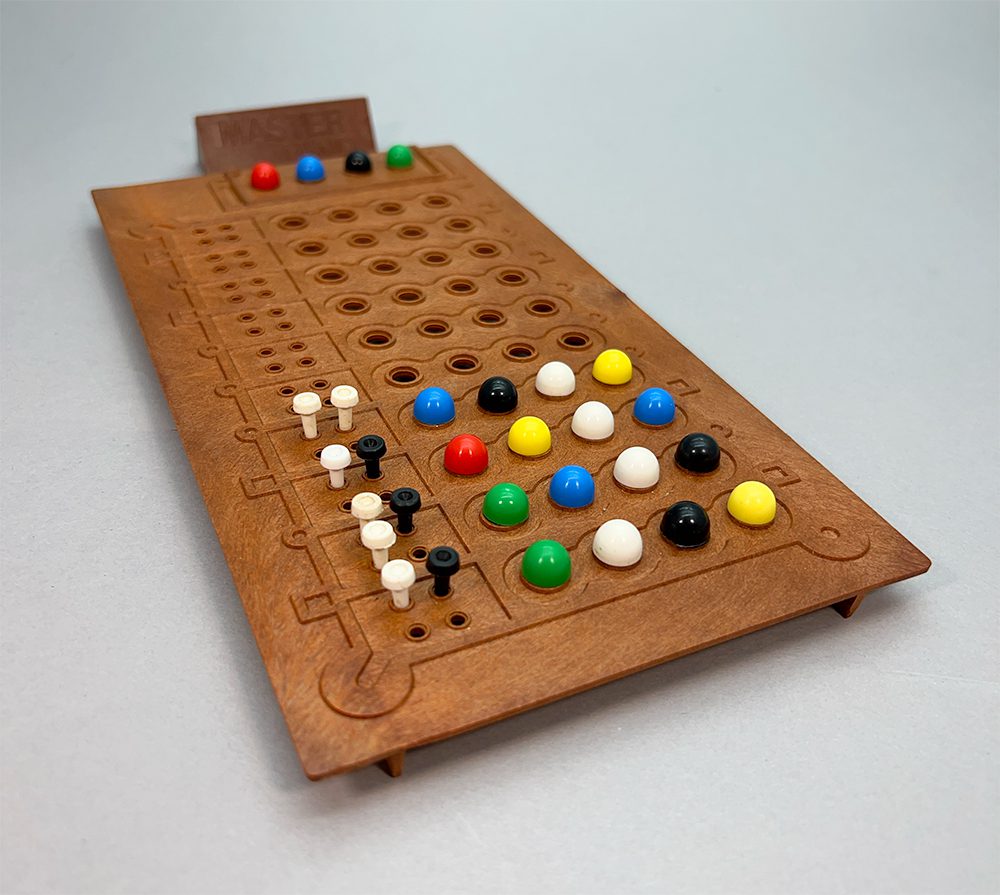
As a ten year-old kid, I was fascinated by this logic puzzle and convinced my parents to play it with me on a regular basis. Since Mastermind is really only a game for the code-breaker, they would create the code and be rewarded by long stretches of silence while I was trying to work out the solution in my head.
The next year, hot on the heels of Mastermind’s success, Word Mastermind was released. (And immediately made an appearance in our home.)
Word Mastermind
Word Mastermind took the concept of a color code and exchanged the six colors for twenty-six letters.
In keeping with the four colors in the original game, only four-letter words are allowed. Also in keeping with the original game, white pegs are used to denote correct guesses in the wrong position, and black pegs show a correct guess in the correct space—just as Wordle does.
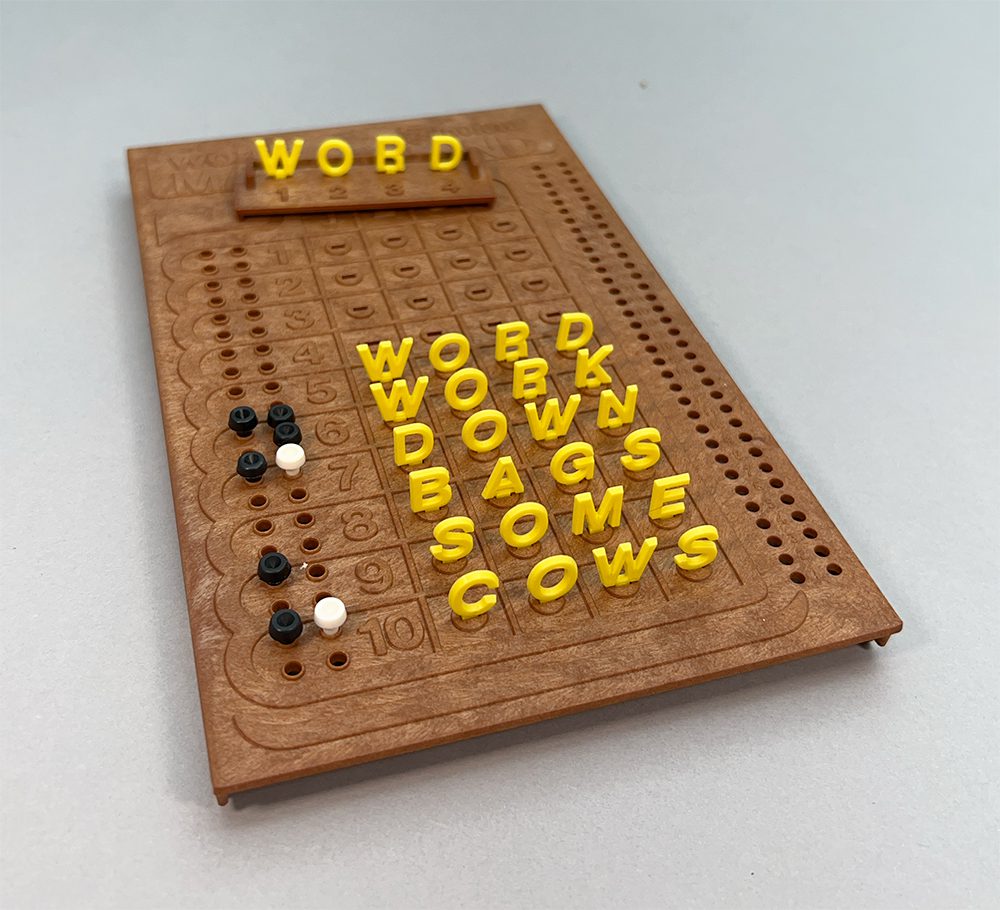
Thoughts
Wordle is an entertaining puzzle that is successful, I think, because it provides the five-letter challenge of Jotto along with the same helpful feedback that Mastermind does. And, by limiting players to a single game per day, it follows the old showbiz adage “always leaving ‘em wanting more”.
Whether Wordle is a passing fad (albeit, one that recently sold to The New York Times for over a million dollars), its ancestry in boardgames is clear. As an update to older word game systems, Wordle also points back to games worth trying should its once-a-day offering just not be enough for you.
Personally, I’m a big fan of all three of these games and recommend you giving them a try.


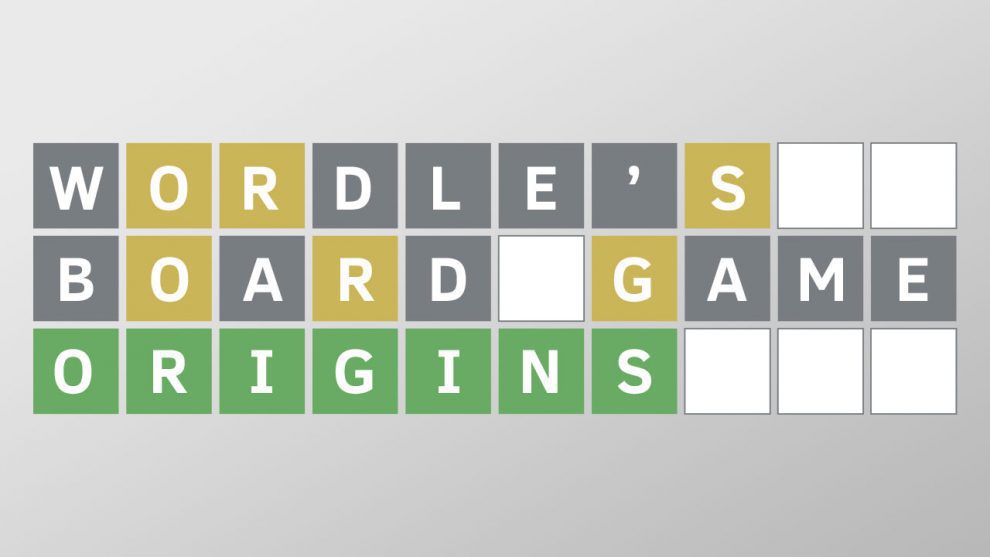



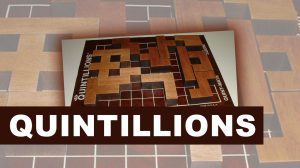




Note: The instructions for Master Mind are not the same as the others, and are actually self-contradictory. This has caused my family and friends much consternation over the decades. If the code breaker places two blue pegs, for example, only one of which is in the correct place, then the instructions seem to imply that the code maker should place one black and one white peg (one for each of the code breaker’s pegs). However, the *example* given in the instructions shows just *one* peg placed by the code maker, a black peg. (These are the colors in the original Master Mind, although “black” may be “red” in a newer set.) Which is it? One peg placed for each of the code-breaker pegs, or one peg placed for each peg under the cover? The instructions can be interpreted either way, and I’m surprised that such a logic-oriented game doesn’t have precise instructions written by someone who better understands logic.
Hi Jan,
The inside lid of the well-used & traveled box seen in the photograph in the article has rules that read:
Black Key Pegs are placed by the Codemaker in any of the Key Peg holes for every Code Peg placed by the Codebreaker which is the same colour and in exactly the same position as one of the Code Pegs behind the shield.
White Key Pegs are placed by the Codemaker in any one of the Key Peg holes when any hidden Code Peg behind the shield matches the Codebreaker’s Code Pegs in colour only, but not in position.
A vacant Key Peg hold is left by the Codemaker for every Peg placed by the Codebreaker which is incorrect for colour.
My rules are printed on an extension of the inner box lid, with a perforated upper edge. This is text-only, so there’s no contradictory image to be confused by.
I think whoever made your version did you a disservice by presenting an incorrect image. I hope that hasn’t dampened your enjoyment of the game!
— Tom
Aha, Tom, you have the original self-contradictory version, which is self-contradictory in a different way.
Because the 2004 instructions are self-contradictory in the way I described, I had tried to solve the mystery by looking at the version that I originally played in the early 1970s (indeed, my parents still have it, just like the one you show), and it says what you wrote. However, the “A vacant Key Peg hole…” instruction contradicts the instructions about black and white key pegs, because the number of key peg holes does not add up. It is, however, consistent with putting one peg for each of the code *breaker*’s pegs.
It is amusing that there is no way to play the game in a way that matches this set of instructions.
I was happy to read your thoughts and information about these 3 games! A long-time subscriber to the Times and devoted fan of their puzzles (especially any Acrostic) my life was made whole again this past year when they introduced Wordle. The first time I worked it, I was flooded with many happy memories of weekend afternoons as a child playing Jotto with my mother, begging her for “just one more game.” She died in 1985, but each day now begins with Wordle, and the world is manageable again. Your knowledge of Jotto’s history, along with related games, made for fascinating reading. Time to check out Ebay! Thanks again.
I found my copy of Jotto in a thrift store. I was apprehensive that the game consisted only of a few pencils and two notepads, but I’m not one to pass up any game from Selchow and Righter. My wife and I played it later that afternoon and, much like you in your youth, played game after game. (I created a replica of the original Jotto sheets in Excel and then printed out lots of copies. I didn’t want to take a chance at using up all the pre-printed pages from the original game.)
What a great story, and such a great way to spend a few moments with your mother each day! Thank you so much for sharing that memory. It made my day!
–Tom
My sister and I played endlessly this game of jotting but we only used notebook paper. When wordle came out I was taken back to the 70s and my childhood with my big sister. She always kept me entertained with games like canasta and jotto and cribbage.
That’s a great memory, Neolani. I love how games both challenge us and, at the same time, can make for such good, lasting memories.
— Tom
There’s a critical difference between Word Mastermind and Wordle. In Wordle, you are shown which letters are in the correct position, while Word Mastermind just tells you how many.